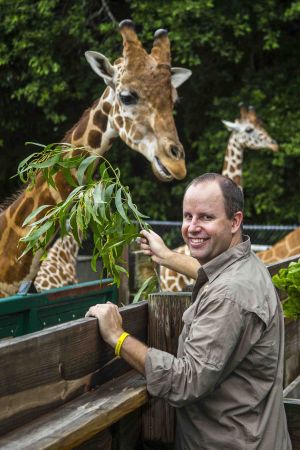Plummetting giraffe numbers have prompted conservationists to renew efforts to save the worlds tallest animal.
Scientists have lately discovered that giraffes are not the social dullards or indifferent parents they were reputed to be.
- Dr Julian Fennessy, executive director of the Giraffe Conservation Foundation.
Concerns about the rapid decline in giraffe numbers have prompted renewed efforts to save the African animals - and raise awareness of their plight. The Giraffe Conservation Foundation has appointed its first executive director, long time giraffe conservationist Dr Julian Fennessy - who says they are the forgotten megafauna.
“You hear all about elephants, Jane Goodall and her chimpanzees, Dian Fossey and her mountain gorillas, but there’s been a massive paucity of information about giraffes.”
Giraffe numbers have plummetted by 40 percent in the past 16 years. There are just 80 thousand left in the wild.
The animals have always fascinated Julian Fennessy. He says they play a key ecological role because they range across habitats to browse for food, therefore distributing seeds across the landscape. Male giraffes can reach 5 and a half metres in stature, females 4.3. They consume around 34 kilograms of shoots, vines and leaves each day.
_Julian_Fenn____(2)_620.jpg)
Young South African giraffe in Botswana's Okavango Delta (c) Julian Fenn.
And despite their reputation, Dr Fennessy says they are very social animals too - for example female giraffes form close friendships with one another that can last for years, while mother giraffes have displayed signs of grief after losing their calves to lions.
Dr Julian Fennessy talks about his efforts to save the giraffe on Nine to Noon with Lynn Freeman.
See more photos of giraffes in our gallery: Giraffe conservation
Auckland Zoo is also supporting this conservation project.

